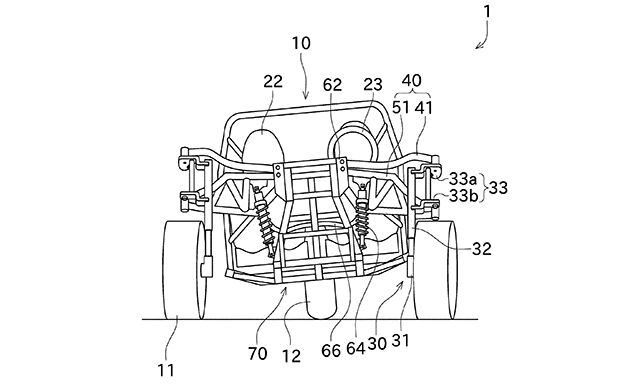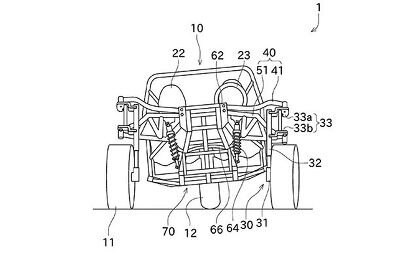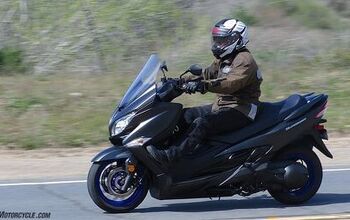Kawasaki is Developing a Slingshot Competitor That Leans

Kawasaki is working on a three-wheeled vehicle similar to the Polaris Slingshot, but with one key difference: it leans into turns.
A patent published by the European Patent Office describes Kawasaki’s vehicle as two wheels up front and one at the rear, just like the Slingshot. Also like Polaris’ autocycle, the vehicle sits two, side-by-side, with the driver behind a steering wheel. Where it differs is a rolling mechanism that allows the three-wheeler to lean while cornering.
Unlike leaning three-wheelers like the Yamaha Niken and Tricity or Piaggio‘s MP3, only the vehicle body and the rear wheel leans while the two front wheels remain vertical. That’s because it’s the two wheels that makes the vehicle turn, like a car, rather than the lean like single-track vehicles. The purpose of the lean, according to the patent, isn’t for turning but rather to counteract the centrifugal force of a turn that would normally push the driver away from the cornering side.
Each of the front wheels is fitted with a steering knuckle and is suspended by its own twin-tube fork. The rolling mechanism is made of two arms (#40, #41 and #51 in the diagrams above) that attach the the forks on one end and the chassis on the other. The two struts shown in the diagrams (#64) are attached to each front wheel’s lower arms but they serve more as dampers to prevent the chassis from rolling too much. Adjusting the preload on these struts will affect how readily the chassis leans into turns.
The patent describes how the two front tires will have a more rectangular profile, like a car tire, since the wheels don’t lean. The rear wheel, however, uses a rounded motorcycle-style tire to better maintain grip while leaned over. The rear wheel is chain driven, and is presumably mounted on a swingarm, though the patent doesn’t provide much detail about the rear suspension. The drive source (#25 in the diagram above) is an internal combustion engine with a transmission, though the patent says an electric or even a hybrid system could also be used. Unlike the Slingshot, Kawasaki’s patent positions the engine at the rear, behind the seats.
The patent application was initially filed in Japan on Nov. 22, 2018, but we suspect it’ll still be a while before we see an actual product from Kawasaki (if at all). Much of the patent deals with the front end and the leaning mechanism, with no indication of how development of the rest of the vehicle has progressed.

Dennis has been a part of the Motorcycle.com team since 2008, and through his tenure, has developed a firm grasp of industry trends, and a solid sense of what's to come. A bloodhound when it comes to tracking information on new motorcycles, if there's a new model on the horizon, you'll probably hear about it from him first.
More by Dennis Chung





































Comments
Join the conversation
Zx10r Engine......or zx14?
They're developing a competitor for an ailing segment? What sense does that make?!